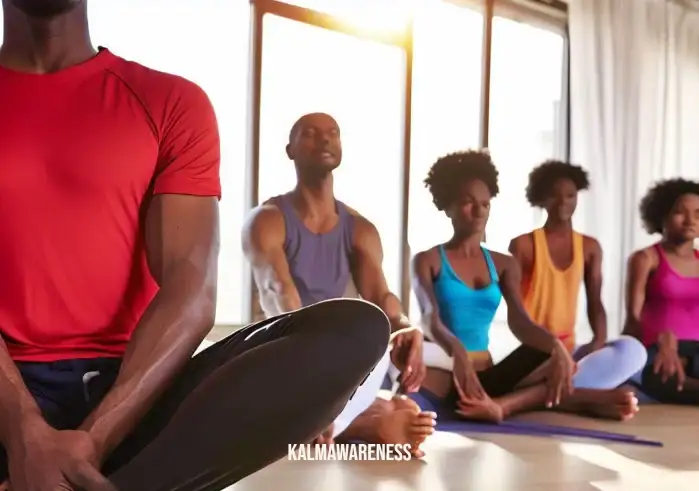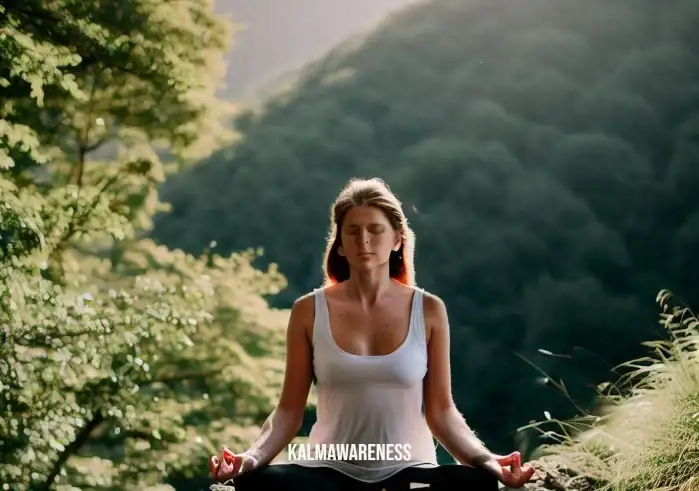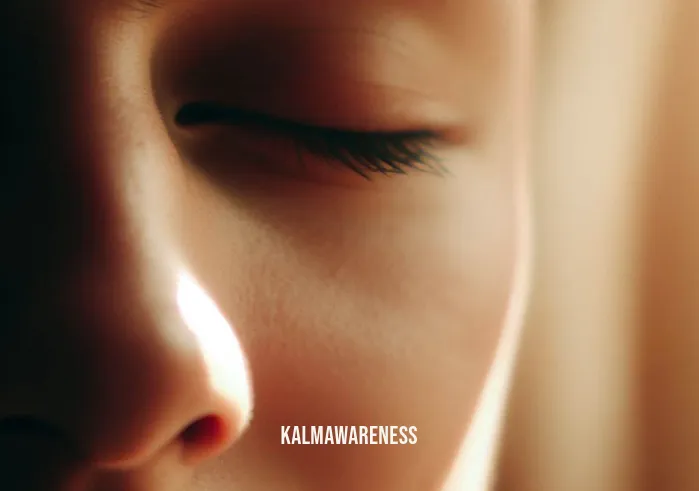Exploring the Wheel Pose Yoga Benefits
In this article, we will dive into the fascinating world of yoga and focus on a specific pose – the Wheel Pose. This invigorating posture, also known as “Chakrasana,” is a remarkable asana with numerous benefits for both the body and mind. Throughout this article, we will explore its significance, delve into its benefits, and provide a step-by-step guide on how to practice it. So, let’s roll into the world of the Wheel Pose!
Introduction to the Wheel Pose
The Wheel Pose is a backbend asana that resembles the shape of a wheel, hence its name. It is a dynamic and empowering posture that involves arching the back and lifting the body off the ground, creating a beautiful arc from the hands to the feet. This asana is not only visually stunning but also offers a plethora of physical and mental benefits that contribute to your overall well-being.
Yoga Cluster and Wheel Pose
In the vast world of yoga, asanas are often categorized into clusters based on their nature and effects. The Wheel Pose falls under the “Backbend Asana” cluster, which includes various postures that involve bending the spine backward. Backbend asanas are known for their heart-opening properties, which can lead to increased flexibility, improved posture, and a sense of emotional release.
Benefits of Wheel Pose
The Wheel Pose, with its focus on backbending, brings a myriad of advantages that enhance both physical and mental health. Some of the key benefits include:
- Strengthening the Back and Core Muscles: As you lift your body into the arching position, the muscles in your back and core work together to support and stabilize the spine.
- Improved Spinal Flexibility: Regular practice of the Wheel Pose can help increase the flexibility of your spine, promoting better mobility and reducing stiffness.
- Opening the Chest and Shoulders: This asana stretches and expands the chest and shoulders, improving respiratory functions and posture.
- Enhanced Lung Capacity: The deep expansion of the chest allows for fuller and deeper breaths, increasing oxygen intake and promoting better lung capacity.
- Energizing the Body: The Wheel Pose is known to be an invigorating posture that boosts energy levels and combats fatigue.
- Heart Chakra Activation: As a heart-opening pose, Chakrasana is believed to stimulate the heart chakra, fostering feelings of love, compassion, and emotional balance.
- Therapeutic for Asthma and Allergies: The Wheel Pose can help alleviate symptoms of asthma and allergies by expanding the chest and improving respiratory functions.
- Rejuvenating the Nervous System: The gentle compression of the spine in the Wheel Pose has a rejuvenating effect on the nervous system.
- Mindful Awareness: The combination of strength and flexibility required for this pose cultivates mindfulness and focus.
Next, we’ll explore the recommended duration for holding the Wheel Pose and provide step-by-step instructions for practicing it.
Exercise Duration
For beginners, it is advisable to start with holding the Wheel Pose for about 30 seconds to 1 minute. As you gain more confidence and strength, advanced practitioners can extend the duration to 1 to 3 minutes.
Step-by-Step Guide to Wheel Pose Yoga Benefits
- Preparation: Warm up your body with some gentle stretches and preparatory asanas, focusing on the back, shoulders, and hip flexors.
- Lie Down: Begin by lying flat on your back, with your knees bent and feet placed firmly on the floor hip-distance apart. Your heels should be as close to your sitting bones as possible.
- Hand Placement: Bend your elbows and place your palms on the floor beside your head, fingers pointing toward your shoulders. Your fingertips should be pointing toward your feet.
- Lift Hips and Shoulders: Press firmly into your palms and feet, lifting your hips and shoulders off the ground. Create an arch with your spine, allowing your head to gently hang backward.
- Leg Extension: Straighten your arms and legs as much as you can, pushing your chest forward and opening your heart toward the sky.
- Engage Core Muscles: Activate your core muscles to support your lower back and maintain stability in the pose.
- Hold and Breathe: Stay in the Wheel Pose for the desired duration while breathing deeply and evenly.
- Release: Gently lower your body back down to the floor, releasing one vertebra at a time.
Remember, the Wheel Pose requires practice and patience. Listen to your body and never force yourself into the posture. With regular practice and dedication, you’ll gradually experience the transformative benefits of Chakrasana.

Exploring the Wheel Pose – Part 2
In the first part of our journey through the captivating world of yoga, we delved into the Wheel Pose (Chakrasana), uncovering its significance, benefits, and step-by-step guide. Now, let’s take our understanding of this empowering asana to a deeper level as we explore its myriad of benefits, consider who can practice it, and discover variations suitable for different levels of experience.
Benefits of the Wheel Pose
The Wheel Pose is not merely a visually stunning posture; it offers a plethora of physical, mental, and emotional benefits that contribute to the overall well-being of the practitioner. Let’s dive into some of its remarkable advantages:
- Strengthens the Entire Back: The Wheel Pose engages the muscles of the entire back, including the erector spinae, helping to build a strong and resilient spine.
- Flexibility of the Spine: Practicing Chakrasana regularly can lead to increased spinal flexibility, which can be particularly beneficial for individuals with sedentary lifestyles or desk jobs.
- Stimulates the Abdominal Organs: As you arch your back, the abdominal organs are gently massaged, which can aid in digestion and promote better gut health.
- Expands the Chest and Lungs: By opening up the chest, the Wheel Pose allows for deeper breathing, enhancing lung capacity and oxygenation of the body.
- Heart Opener and Emotional Release: This backbend is often referred to as a “heart opener” as it can release stored emotions and promote feelings of joy and positivity.
- Enhances Posture: Regular practice of the Wheel Pose encourages an upright posture and can help alleviate tension in the shoulders and upper back.
- Boosts Energy and Mood: Chakrasana is known for its invigorating effects, increasing energy levels and promoting a positive mood.
- Therapeutic for Stress and Anxiety: The deep stretch of the Wheel Pose can have a calming effect on the nervous system, making it therapeutic for stress and anxiety.
- Improves Spinal Alignment: This pose encourages a healthy curvature of the spine, aiding in correcting posture-related issues.
- Promotes Self-Confidence: Achieving the Wheel Pose requires both physical and mental strength, contributing to an enhanced sense of self-confidence.
Who Should Avoid the Wheel Pose?
While the Wheel Pose offers numerous benefits, it may not be suitable for everyone, especially those with certain medical conditions. It is essential to approach this asana with caution or avoid it altogether if you fall into any of the following categories:
- Back Injuries: Individuals with chronic back pain, herniated discs, or spinal injuries should avoid the Wheel Pose, as it may exacerbate their condition.
- Wrist or Shoulder Issues: If you have wrist or shoulder injuries, it’s best to avoid putting excessive pressure on these areas in the Wheel Pose.
- High or Low Blood Pressure: As the Wheel Pose is an invigorating posture, those with high or low blood pressure should approach it with care and seek guidance from a yoga instructor.
- Pregnancy: Pregnant individuals should refrain from practicing Chakrasana unless they are experienced yoga practitioners and have received approval from their healthcare provider.
- Migraines or Headaches: The deep backbend of the Wheel Pose can sometimes trigger or worsen migraines or headaches, so individuals prone to these issues should avoid the pose.
Variations of the Wheel Pose
The beauty of yoga lies in its versatility and adaptability to different levels of experience. Here are some variations of the Wheel Pose that cater to practitioners at various stages of their yoga journey:
- Supported Wheel Pose: For beginners or those building their backbending strength, placing a yoga block or bolster under the hands can offer support and reduce the depth of the backbend.
- One-Legged Wheel Pose: Once you have gained confidence in the standard Wheel Pose, you can explore lifting one leg off the ground, challenging your balance and core stability.
- Forearm Wheel Pose: For individuals with wrist sensitivity, the Forearm Wheel Pose is an excellent alternative that involves resting on the forearms instead of the palms.
- Drop Back Wheel Pose: Advanced practitioners can explore the exhilarating Drop Back Wheel Pose, where you release your hands from the floor and arch backward into the pose with control.
- Wheel Pose with Bound Hands: For a deeper stretch and shoulder opening, try clasping your hands behind your back while in the Wheel Pose.
Remember, it is essential to warm up properly before attempting any of these variations and to practice under the guidance of a qualified yoga instructor.
✨ In the final part of our journey, we will explore advanced variations and transitions from the Wheel Pose, as well as important safety tips to keep in mind during your practice. Get ready to elevate your yoga experience as we continue our exploration of this empowering asana! ✨

Exploring the Wheel Pose – Part 3
As we approach the final leg of our yoga journey, our exploration of the captivating Wheel Pose (Chakrasana) continues. In this chapter, we will delve into the rich history of the pose, its spiritual significance, tips to enhance your practice, common mistakes to avoid, modifications for practitioners with injuries or limited flexibility, and poses that complement the Wheel Pose.
The History of the Wheel Pose
The Wheel Pose has a fascinating history that dates back to ancient times. Its origins can be traced to classical yoga texts such as the Yoga Korunta and the Hatha Yoga Pradipika. In these texts, the Wheel Pose is referred to as “Urdhva Dhanurasana,” which translates to “Upward Bow Pose.”
Historically, the Wheel Pose was not merely a physical posture but also held symbolic significance. It was seen as a representation of the upward movement of energy (prana) along the spine, awakening the spiritual center and promoting self-realization. Ancient yogis believed that practicing the Wheel Pose could lead to a deeper connection with the divine and unlock hidden potential within oneself.
The Spiritual Significance of the Wheel Pose
Beyond its physical benefits, the Wheel Pose holds deep spiritual significance in the world of yoga. It is often associated with the activation and balancing of the heart chakra, known as “Anahata.” The heart chakra is believed to be the center of love, compassion, and emotional balance. By opening the chest and heart in the Wheel Pose, practitioners can cultivate a profound sense of love and acceptance, not only for others but also for themselves.
Moreover, the Wheel Pose encourages surrender and trust in the process of life. As you arch backward, you must trust your body’s strength and capacity to support you, symbolizing the idea of surrendering to the flow of life and embracing both challenges and blessings.
Tips for Getting the Most Out of the Pose
To maximize the benefits of the Wheel Pose and ensure a safe and fulfilling practice, consider the following tips:
- Warm-Up Thoroughly: Prior to attempting the Wheel Pose, engage in a comprehensive warm-up that includes gentle backbends, shoulder stretches, and hip openers.
- Engage Your Core: As you lift into the pose, activate your core muscles to protect your lower back and maintain stability.
- Focus on Breath: Breathe deeply and evenly throughout the pose, allowing your breath to guide your movements and create a sense of calmness.
- Maintain Even Weight Distribution: Distribute your weight evenly between your hands and feet, avoiding excessive pressure on any one area.
- Listen to Your Body: Respect the limitations of your body and avoid pushing yourself into the pose if you feel discomfort or pain.
Common Mistakes to Avoid
While the Wheel Pose offers numerous benefits, it is essential to be mindful of potential mistakes that can compromise your practice:
- Overarching the Lower Back: Avoid excessive compression in the lower back by engaging your glutes and thighs to support the backbend.
- Collapsing Shoulders: Keep your shoulders broad and avoid collapsing into them, as this can lead to unnecessary strain.
- Improper Hand Placement: Ensure that your palms are placed firmly beside your head and that your fingers point toward your shoulders for optimal support.
Modifications for Injuries or Limited Flexibility
For practitioners with injuries or limited flexibility, modifications can make the Wheel Pose accessible and safe:
- Bridge Pose (Setu Bandhasana): Bridge Pose offers a gentle backbend alternative with support from the feet and shoulders on the floor.
- Wall-Assisted Wheel Pose: Use a wall as a prop to support your back and gradually deepen the backbend.
- Supported Backbend: Place a bolster or yoga block under your back to reduce the intensity of the backbend.
Poses Complementary to the Wheel Pose
To complement your practice of the Wheel Pose and enhance its effects, consider incorporating the following poses into your yoga routine:
- Child’s Pose (Balasana): This resting pose gently stretches the lower back and offers a counterpose to the Wheel Pose.
- Camel Pose (Ustrasana): Camel Pose is another heart-opening backbend that complements the Wheel Pose’s effects on the heart chakra.
- Forward Fold (Uttanasana): After practicing the Wheel Pose, a gentle forward fold can help release tension in the back and hamstrings.
- Cobra Pose (Bhujangasana): Cobra Pose is a preparatory backbend that helps build strength and flexibility for the Wheel Pose.





![guided meditation deep sleep _ Image: [Scene shows the person sleeping soundly, a gentle smile on their face, in a well-lit bedroom.]Image description: Fast asleep with a gentle smile, the person finally finds the rest they've been seeking. The well-lit bedroom symbolizes the peace and tranquility they've achieved through guided meditation for a deep sleep.](https://kalmawareness.com/wp-content/uploads/2023/09/346_5-300x211.webp)